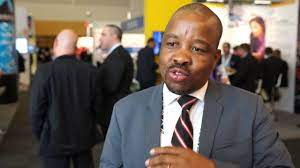 Namibian telecom companies are experiencing significant interruptions due to a limited electricity supply.
Namibian telecom companies are experiencing significant interruptions due to a limited electricity supply.
Windhoek, Namibia’s capital has been hit the worst by the energy crisis.
“We apologize for any inconvenience this may cause and appreciate your understanding – as we work to restore services,” said MTC Namibia in a statement. The operator reported a power loss in Windhoek, where its key systems serving the rest of the country are based. “The power outages were followed by continued surges, which affected the expected automatic services restoration, resulting in service failure in some parts of the country, affecting customers.”
The company told subscribers that the process of service restoration was ongoing, with personnel working round the clock to restore the remaining affected locations.
Telecom Namibia also reported an outage and apologized to customers: “we recognize the critical role internet services play in our daily lives and businesses, and we extend our sincere apologies for any inconveniences this may have caused.”
 Contrary to opinions aired in the South African market recently, fiber is not a replacement for fixed-wireless access (FWA) for last-mile connectivity.
Contrary to opinions aired in the South African market recently, fiber is not a replacement for fixed-wireless access (FWA) for last-mile connectivity.
This is according to Comsol CEO Iain Stevenson, who notes that vandalism and theft impact the reliability of South Africa’s fibre networks, while ageing infrastructure degrades the quality of service experienced.
He says FWA – specifically licensed FWA designed for business – is a powerful wireless technology that offers a reliable complementary access medium or an alternative to fibre.
Many organisations dismissing last-mile wireless are basing their opinions on legacy mediums
Stevenson says there are still misconceptions in the market around the performance of wireless technologies.
“Many organisations dismissing last-mile wireless are basing their opinions on legacy mediums. Wireless technologies have evolved dramatically over the past 10 years. There is also a vast difference between heavily contended LTE and 5G products aimed at the consumer market and FWA products engineered for business.”
He explains that Comsol, the leading provider of wholesale open-access FWA last-mile connectivity and private networks in South Africa, has built its business on advanced networks with connectivity and power redundancy, to support mission-critical business connectivity.
“As the last-mile connectivity specialist for business, we use various technologies to provide reliability and redundancy for our customers. We typically recommend a hybrid approach combining mediums like FWA, fixed-mobile, fibre or satellite to ensure resilience in networks,” Stevenson says.
Stronger, more resilient
“When considering FWA, it is important to understand that licensed FWA services offer stronger, more resilient connections than unlicensed wireless connectivity. The latest evolution of FWA services, licensed FWA, delivers performance on par with that of fibre and, when combined, providing the most resilient solution.
Stevenson says fibre roll-outs can be costly and time-consuming due to wayleave obligations that fibre network operators have to comply with. FWA services are installed in a matter of days and our service offering is a quality product for the business. Our service delivers hundreds of megabits per second, is highly stable and reliable, and latencies are equivalent to fibre, with the added advantage that it is quick and cost effective to deploy. As such, Comsol licensed FWA is ideal as a first-choice connectivity medium for small to mid-sized businesses and is the best redundancy option alongside fibre for large enterprises.”
Source: TechCentral
 Airtel Telesonic, the wholesale arm of Airtel Africa, has successfully launched the initial phase of the 2Africa submarine cable system, one of the largest subsea projects globally. This system aims to interconnect Africa, Europe, and Asia, enhancing connectivity across these continents.
Airtel Telesonic, the wholesale arm of Airtel Africa, has successfully launched the initial phase of the 2Africa submarine cable system, one of the largest subsea projects globally. This system aims to interconnect Africa, Europe, and Asia, enhancing connectivity across these continents.
The first phase of activation connects Kenya, Tanzania, and South Africa, marking a significant milestone in improving Africa’s internet infrastructure. This achievement was made possible in collaboration with ASN, a leader in optical submarine networks, known for offering turn-key solutions with cutting-edge technology.
This activation is part of Airtel Africa’s broader strategy to provide faster and more resilient internet services, supporting the continent’s digital transformation.
Source: Tech Africa News
 Zimbabwe has finally granted Starlink a licence to operate in the Southern African country.
Zimbabwe has finally granted Starlink a licence to operate in the Southern African country.
President Emmerson Mnangagwa of Zimbabwe announced the development on X (formerly Twitter) on Saturday, saying one of the strategic pillars that anchors the republic’s developmental agenda under Vision 2030 is innovation, science and technology.
The president said prioritisation of the digital economy and the emerging importance of technology in “our day-to-day activities requires government to lead from the front in providing an environment where investment in technology is promoted.”
The development comes weeks after the Postal and Telecommunications Regulatory Authority of Zimbabwe (POTRAZ), Zimbabwe’s telecom regulator, warned that individuals and businesses discovered advertising and distributing Starlink internet services’ equipment will be arrested.
Subsequently, the regulator has been conducting nationwide raids to arrest those utilising Starlink equipment and services.
On Saturday, Mnangagwa clarified the situation. He said: “I have approved the licensing of Starlink by POTRAZ to provide advanced internet and related digital processing services in Zimbabwe through its sole and exclusive local partner, IMC Communications (Pvt) Ltd.”
SpaceX, in which Elon Musk is a major shareholder, operates Starlink, a satellite internet system that covers more than 60 countries.
SpaceX began launching Starlink satellites in 2019.
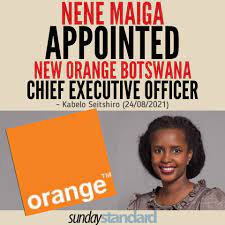 Vodacom Group is in discussions with France’s Orange about a strategic partnership in Africa to explore infrastructure deals to help keep down costs on the continent, people familiar with the matter said.
Vodacom Group is in discussions with France’s Orange about a strategic partnership in Africa to explore infrastructure deals to help keep down costs on the continent, people familiar with the matter said.
The telecommunications companies are looking at agreements in overlapping markets including Egypt and the Democratic Republic of Congo, and reviewing where there are other opportunities to work together, said the people, who asked not to be identified because the discussions are private.
The talks involve potential agreements to share infrastructure and jointly build connectivity to rural areas, they said. No final decisions have been made and the two companies may not reach an agreement, they said.
We are looking at partnerships with other mobile operators and financial investors in countries where we operate
Vodacom, Africa’s largest mobile operator, is also in talks with service providers in other countries that it has a presence in, said the people.
“We are looking at partnerships with other mobile operators and financial investors in countries where we operate,” a representative for Vodacom said in an e-mailed statement. “Our aim is to potentially alleviate the costs of roll-out and rural connectivity, helping to address cost to communicate and narrow the digital divide.”
The spokesman said the company would comment on specific agreements once they’ve been finalised. A representative for Orange didn’t have an immediate comment.
Growth drivers
Vodacom and Orange are each working to expand to capture the market’s exploding growth — particularly for mobile services where young, tech-savvy users are spending more time on devices to access everything from entertainment to financial services. The African businesses are proving to be growth drivers for each group’s European parent companies.
Source: TechCentral
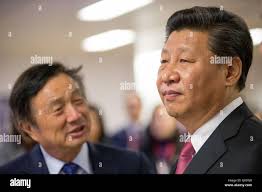 HARARE, May 7 (Xinhua) — A Zimbabwean official on Tuesday praised Chinese tech giant Huawei for its significant role in advancing Zimbabwe’s digitalization efforts.
HARARE, May 7 (Xinhua) — A Zimbabwean official on Tuesday praised Chinese tech giant Huawei for its significant role in advancing Zimbabwe’s digitalization efforts.
In an interview at the Huawei Zimbabwe Congress Summit 2024 in Harare, Beaullar Chirume, permanent secretary in the Ministry of Information Communication Technology (ICT), Postal and Courier Services, highlighted Huawei’s contribution to laying the foundations for Zimbabwe’s ICT infrastructure through cooperation with China.
“They have huge international giants like Huawei who are assisting us in providing solutions that will make this digitization journey better, that will make it swifter, and that will also make sure that we achieve our targets well ahead of time,” she said.
Chirume said over the past 25 years, Zimbabwe has witnessed Huawei’s commitment and contribution to the country’s vision of a digitized economy.
In addition to infrastructure development, Chirume highlighted Huawei’s efforts in cultivating ICT talents in Zimbabwe through programs like Seeds for The Future and the Huawei ICT Academy.
Li Fei, vice president of Huawei sub-Saharan Africa, reiterated Huawei’s commitment to bringing the latest ICT technologies to Zimbabwe to support its digital transformation. “With the support of our partners, with the trust of the local government, and also support from our partners, we hope we can bring all the latest ICT technologies to build Zimbabwe to be a digitalized country,” Li said.
The Huawei Zimbabwe Congress Summit, attended by government officials, business leaders, Huawei partners and customers, served as a platform for Huawei to showcase its advanced products and solutions aimed at building a digitalized Zimbabwe.
Source: English News
 5G has long been touted as a key tool to levelling up connectivity on the continent, but is it all it’s cracked up to be?
5G has long been touted as a key tool to levelling up connectivity on the continent, but is it all it’s cracked up to be?
The digital divide remains a huge issue across Africa, with 74% of the continent’s population remaining unconnected to the internet, according to the GSMA.
“The digital divide in Africa is staggering. The substantial capital expenditure required for 5G deployment means that the return on investment (ROI) is targeted primarily at major towns and metropolitan areas,” says Paul Colmer, EXCO member, Wireless Access Provider’s Association (WAPA). “Paradoxically, this exacerbates the digital divide, especially in outlying regions where the divide is most pronounced, widening the gap even further.”
“While 5G’s primary purpose is certainly not to expand coverage to areas that don’t already have it, it doesn’t have to be one or the other,” reports Abdelkader Najja, managing director Middle East and Africa, BICS. “In some regions where connectivity is more established, 5G promises to open up huge commercial opportunities.
Countries that depend on tourism, like Egypt for example, will need 5G to offer a seamless roaming experience to inbound travellers. Alternatively, regions with a strong enterprise or industry focus will benefit from 5G use cases across industries including logistics, agriculture, or security.”
Select markets throughout Africa, including South Africa, Kenya, and Nigeria, are rolling out 5G networks because the customer bases can afford to purchase these services and finance the costs of building the necessary infrastructure.
“Most of the continent, however, is very price sensitive. In these areas, the goal remains bringing 3G and 4G networks online and giving citizens access to basic online services,” says Vaibhav Magow, vice president, international division, Hughes. “It’s important that reliable connectivity be available to anyone who wants it. Satellite plays a critical role in bridging this gap by backhauling cellular traffic to extend network reach to areas where cable and fibre cannot.”
Money money money
The greatest potential obstacle to consumer 5G adoption and usage in Africa is device cost and availability. According to the GSMA, some 60% of the sub-Saharan African population lives in an area with mobile coverage, but does not use mobile internet, with device affordability the biggest concern.
“The affordability of mobile devices in some parts of Africa is an obstacle to getting paying customers on 4G networks. Unless the price of handsets drops, we expect this to hold true for 5G networks as well,” says Magow.
Very recently we’ve seen an influx of suitable devices on the market at $100, however, this remains well beyond the means of the majority. Moreover, on top of the device cost is 10-30% extra in taxation and duty fees. Many are now calling for an exemption for low-cost devices to enhance uptake and support socioeconomic progress.
Additionally, “given the impact of device affordability on 4G adoption, device financing schemes will likely be necessary to improve affordability,” adds Najja.
Meanwhile, from the MNO viewpoint, Najja reports that the greatest challenge is engaging in 5G investment where the ROI on 4G networks is still not covered: monetisation will be key for this process: “however, the decline in 2G and 3G connections creates an opportunity for network shutdowns and the transfer of resources to 4G and 5G networks.”
“Cost is an issue for both 4G and 5G deployments, but the added costs associated with 5G is the biggest challenge,” agrees Magow. “5G networks need significantly more cell towers compared to 4G networks. While this infrastructure can feasibly be built in big cities with a high density of people, the business case does not hold up in sparsely populated areas. Additional components, like new infrastructure designs and core networks, make 5G even more costly.”
Additionally, “while 5G is technically more energy-efficient than 4G per byte, the power-hungry nature of 5G poses a significant challenge in regions with power shortages and frequent loadshedding, such as South Africa,” says Colmer. And with no solution to grid brownouts and blackouts in sight, power sustainability is expected to remain problematic for the foreseeable.
“The greatest potential obstacle to consumer 5G adoption and usage in Africa is device cost and availability. According to the GSMA, some 60% of the sub-Saharan African population lives in an area with mobile coverage, but does not use mobile internet, with device affordability the biggest concern.”
Rolling out 5G across Africa will also be a big challenge in terms of building out the infrastructure “due to the size of the territory and 5G’s higher bandwidth meaning it has a shorter range than 4G and so requires multiple radio sites to support it,” says Najja. “Since enterprises are the main drivers of 5G Standalone (SA) adoption across
Africa, this means most 5G deployments will be focused on cities and densely populated areas. The rest of the landscape will operate on lower frequencies (reusing 2G/3G) and will offer different 5G coverage, but still 5G.”
Notably, 5G requires a complete change in RAN and the core network: “non-standalone 5G requires an update to the Radio Access Network (RAN) and relies on fully deployed 4G networks, which presents its own set of challenges,” explains Najja. “In contrast, 5G SA demands a complete overhaul of the core networks as well.”
Spectrum, too, has proven a significant limiting factor, with most countries only just beginning to look at policy and spectrum auctions.
“The acquisition of high-demand International Mobile Telecommunication (IMT) spectrum has been a prolonged process, with operators incurring substantial costs,” says Colmer. However, here things are looking up as “more spectrum auctions are anticipated in 2024; and the transition from terrestrial to digital TV has also facilitated the availability of the sub-1GHz band for 5G use.”
5G – the next damp squib?
On the lips of almost every mobile industry professional, 5G is a true stalwart hot topic for operators and service providers. Although constructed around different architecture, 4G and 5G share more similarities than 4G does with 3G.
“5G is more of an evolution and while it offers more advanced connectivity, operators see a lot of additional benefits in more advanced network protocols,” explains Najja.
“It makes 5G networks more efficient with better network provisioning, resource allocation and advanced features like network slicing. This translates into greater cost efficiency which will help deliver faster return on investment for operators and should support further 5G rollout across the operator’s region.”
Further, from a market share point of view, 5G is a fantastic boon for operators: “in markets where there is significant demand for fast, low-latency connectivity, operators with 5G networks can afford to attract consumers with better average revenue per user (ARPUs) and become more profitable,” says Magow. “In the enterprise segment, these operators will also be able to pursue new customers in the professional services vertical that depend on latency-intensive cloud applications to support the flexibility of remote work.”
However, according to Colmer, “operators stand to gain relatively little by prioritising 5G over 4G, aside from retaining clients who still believe in the initial hype surrounding 5G…”
For Africa’s consumers, 5G offers higher quality connections – more speed, more bandwidth, greater reliability: “while in some countries like South Africa or Egypt, there is a growing demand for this, the difference between 4G and 5G is far more significant when it comes to enterprises,” says Najja. “We’ve already seen this play out in other markets around the world – with the benefits and use cases available to businesses driving most of the adoption and growth of 5G SA. Across Africa, 5G could support businesses with its higher data speeds and greater capacity. It will enable the deployment of large-scale IoT solutions and provide low-latency communications for real-time data processing in developing cities and regions. For enterprises and industries, this will mean more efficient operations and the unlocking of new applications and services.”
Colmer, however, remains unconvinced about the achievements of 5G, both on the continent and abroad.
“Initially hyped as a revolutionary technology with claims of transforming self-driving cars, enabling remote robotic surgery, and serving as a catalyst for the Fourth Industrial Revolution (4IR), 5G has faced a reality check in recent years,”
“Initially hyped as a revolutionary technology with claims of transforming self-driving cars, enabling remote robotic surgery, and serving as a catalyst for the Fourth Industrial Revolution (4IR), 5G has faced a reality check in recent years,” opines Colmer. “Many of these grandiose claims are being exposed, particularly given the practical challenges associated with achieving multi-gigabit low-latency connectivity, which is primarily possible using mmWave spectrum (above 26GHz). However, this technology demands high population densities and small cell technology, making it impractical for vast regions. Even in advanced countries like South Korea, 5G has faced setbacks, and in South Africa, LTE remains faster than 5G in many areas.”
Helping society grow
Whatever your view on the specifics of 5G, reliable access to the internet is crucial for creating more connected communities and advancing business growth.
“The narrative of 5G connectivity in Africa is largely driven by original equipment manufacturer (OEM) giants manufacturing the equipment,” says Colmer. “However, meaningful connectivity, in my perspective, revolves around providing affordable access for all. 5G, given its current limitations and expense, may not be the most effective solution in bridging this connectivity gap.”
Najja believes that meaningful connectivity is any technology that can connect communities and create opportunities, regardless of the generation of connectivity this is built on – and not necessarily 5G.
“5G will certainly be a part of this, but it will be a part,” explains Najja. “Some markets across Africa will be better served currently by the older generation networks. Rather than getting lost in the weeds, it’s important to remember the purpose of mobile technology and focus on this mission – to help societies grow stronger by connecting together.”
For sure, satellite will continue to play a vital role in the connectivity ecosystem throughout Africa.
“To drive meaningful connectivity across the continent, three priorities remain,” shares Magow. “For one, operators should look to build greater interoperability into their systems so that network deployment costs can shrink, allowing them to serve more customers. Secondly, governments should reduce fees and taxes associated with installing satellite ground terminals and provide ample funding for community WiFi programs. And finally, the International Telecommunications Union (ITU) should ensure there is enough spectrum available to support networks across the continent.”
Colmer adds that “it’s worth noting that as of now, there are no globally recognised success stories for 5G business cases. As we contemplate the role of 5G in Africa, particularly in the context of the existing digital divide, it’s crucial to question the practicality and genuine benefits it brings to the continent.”
Something worth considering considering the hefty 5G investments announced most days..
 West Africa has emerged as the mobile money market’s new powerhouse, according to the GSMA.
West Africa has emerged as the mobile money market’s new powerhouse, according to the GSMA.
In a new report backed by the Bill & Melinda Gates Foundation, the industry group found that global cumulative transaction value grew 14% last year to reach a whopping $1.4 trillion.
The GSMA’s State of the Industry Report on Mobile Money came out the same day Ericsson and Juniper Research published a forward-looking one of their own. They predict that digital wallet transaction value will rocket by 80% by 2028.
West Africa – in particular Nigeria, Ghana and Senegal – is the main driver of growth. The GSMA found that in 2023, more than a third of the world’s newly-registered and active 30-day accounts originated from the region.
Operators in West Africa face more competition from non-MNO mobile money providers, the GSMA said, which is helping to drive the overall market.
In Nigeria in particular, according to a separate report from FXC Intelligence, access to digital payment services has expanded from 21.6 percent of adults in 2010 to 70 percent by 2020. The government played an important role here – its central bank began offering mobile money licences in 2011 and has so far issued 21 of them.
Last year, Nigeria stepped up efforts to promote cashless payments and reduce transaction fees by launching its own domestic card service to compete with Visa and Mastercard.
“Over the years, Sub-Saharan Africa has been a key driver of mobile money’s success, home to almost three-quarters of the world’s accounts,” said GSMA director general Mats Granryd, in the report. “In the past 10 years, West Africa has emerged as a key player with the number of registered mobile money accounts doubling between 2013 and 2023.”
During those 10 years, countries with mobile money services added an estimated $600 billion to their combined GDP, $150 billion of which was in Sub-Saharan Africa.
Zooming out again to look at the global picture, the GSMA said the number of mobile money accounts reached 1.75 billion in 2023, up 12 percent on 2022. The number of active accounts is much smaller, reaching 435 million – a 9 percent year-on-year increase.
The number of adjacent services is also rising steadily.
Nearly half of respondents to a related GSMA survey about the global adoption of mobile financial services said they offered ‘responsible credit’ services in 2023, up from just over 40% in 2022. Similarly, the number of providers offering savings accounts grew to 44% from 39%, while those offering insurance services grew to 23% from 14%.
“Mobile money has demonstrated its potential to transform economies and societies, driving financial inclusion and sustainable development worldwide,” said Ashley Olson Onyango, head of financial inclusion and agritech at GSMA. “As the industry has started to mature, it is also clear that mobile money offers a sound commercial proposition. Between 2022 and 2023 the average revenue per user rose 40 percent, validating the recent investment that the industry has seen.”
The report does highlight several adoption barriers though, the main one being – unsurprisingly – lack of mobile phone ownership. This affects women more than men – globally women are 7 percent less likely than men to own a phone.
Perceived relevance, digital skills, social norms, and trust levels are other hurdles that also need to be vaulted.
“To ensure mobile money remains safe, accessible, and affordable, there is a clear need for governments and regulators to work with financial service providers to launch financial literacy programmes that can empower underserved populations and improve their financial decision-making,” Olson Onyango said.
About the Author(s)
Nick Wood
Nick Wood
Nick is a freelancer who has covered the global telecoms industry for more than 15 years. Areas of expertise include operator strategies; M&As; and emerging technologies, among others. As a freelancer, Nick has contributed news and features for many well-known industry
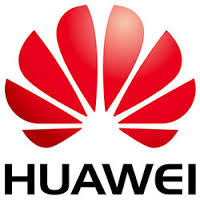 MTN Group and Huawei signed a Memorandum of Understanding (MoU) for a Joint Innovation Technology Lab, aiming to deepen cooperation in technological innovation. The signing ceremony, which held at MWC Barcelona, Spain was attended by senior delegations from MTN and Huawei.
MTN Group and Huawei signed a Memorandum of Understanding (MoU) for a Joint Innovation Technology Lab, aiming to deepen cooperation in technological innovation. The signing ceremony, which held at MWC Barcelona, Spain was attended by senior delegations from MTN and Huawei.
This strategic partnership will see the creation of an Innovation Technology Lab at MTN Group’s headquarters in South Africa. The lab will serve as a neutral platform for collaboration within the Africa’s digital ecosystem, accelerating the development, deployment and adoption of innovative digital solutions driven across the continent.
Together, the two companies will leverage this initiative to focus their research and development efforts on key areas such as 5G and beyond, Artificial Intelligence, Big Data analytics, cloud computing, and digital financial services. The partnership aims to accelerate the time-to-market of MTN’s products and services while addressing the unique challenges faced in Africa, including improving network coverage in rural areas, enhancing energy efficiency, and affordability.
Additionally, MTN’s operational teams will actively participate in the innovation process, ensuring the solutions developed directly address real-world challenges and drive meaningful digital transformation and sustainable development in Africa.
Group Chief Technology and Information Officer Mazen Mroué expressed his enthusiasm about the partnership stating, “The Joint Innovation Technology Lab is more than a partnership between two companies; it’s an investment in the growth of Africa’s digital ecosystem. We believe that collaboration is essential for developing solutions that truly meet the continent’s needs, and this Lab will pave the way for a more inclusive, sustainable, and prosperous future for Africa.”
Li Peng, Huawei’s Corporate Senior Vice President and President of ICT Sales & Service, said, “Huawei will continue innovating with MTN to ensure they have the products and solutions required to best serve Africa’s unique market. This will not only give MTN a competitive edge in terms of network quality, user experience, and rapid deployment, but also help MTN achieve their own business objectives. We believe that this newly-established lab will help supercharge both MTN’s R&D as well as Africa’s digital economy, bringing more prosperity to the African continent.”
This partnership further demonstrates MTN and Huawei’s shared commitment to shaping Africa’s digital landscape, opening new pathways for innovation and digital inclusion, and economic growth.
MWC Barcelona 2024 will be held from February 26 to February 29 in Barcelona, Spain. During the event, Huawei will showcase its latest products and solutions at stand 1H50 in Fira Gran Via Hall 1.
Source: Huawei
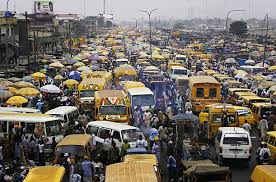 The Federal Government of Nigeria is partnering with the World Bank to raise the $3 billion the country needs to ensure full fiber optic coverage. The partnership was revealed by Bosun Tijani
The Federal Government of Nigeria is partnering with the World Bank to raise the $3 billion the country needs to ensure full fiber optic coverage. The partnership was revealed by Bosun Tijani 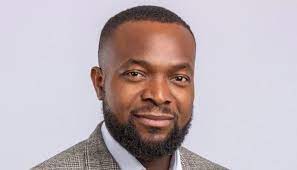 (pic), Minister of Communications, Innovation and Digital Economy, during a meeting with stakeholders in Abuja on Tuesday, February 13.
(pic), Minister of Communications, Innovation and Digital Economy, during a meeting with stakeholders in Abuja on Tuesday, February 13.
As part of this collaboration, a National Digital Broadband Fund will be established. The funds raised will be used to deploy approximately 95,000 km of fiber optic cable, in partnership with the private sector. The project is expected to be completed within the next three years.
In December 2023, during an interview on the local television channel Channels TV, Mr. Tijani stressed the need to invest in the extension of the national fiber optic network. The minister then expressed a need for around 65,000 km of optical fiber at a cost of between 1.5 and 2 billion dollars. He also made it his mission to seek partners at the World Economic Forum (January 15-19) to improve Internet connectivity in the country.
Furthermore, the Nigerian Communications Commission (NCC) is campaigning with Nigerian states for the reduction of rights of way in order to facilitate the deployment of optical fiber across the country. Katsina, Nassarawa, Anambra, Ekiti states, as well as the Federal Capital Territory have already taken steps in this direction. The current right of way fee in Nigeria is 145 naira ($0.09) per linear meter.
These various initiatives should not only improve the quality and reduce the costs of telecoms and Internet services in Nigeria, but also extend the reach of these services to millions of additional people. According to the latest statistics from the Nigerian Communications Commission (NCC), Nigeria has 223.2 million mobile subscribers. The country also has 162.06 million Internet service subscribers, of which 90.7 million use broadband.
Source: Agency EcoFin
